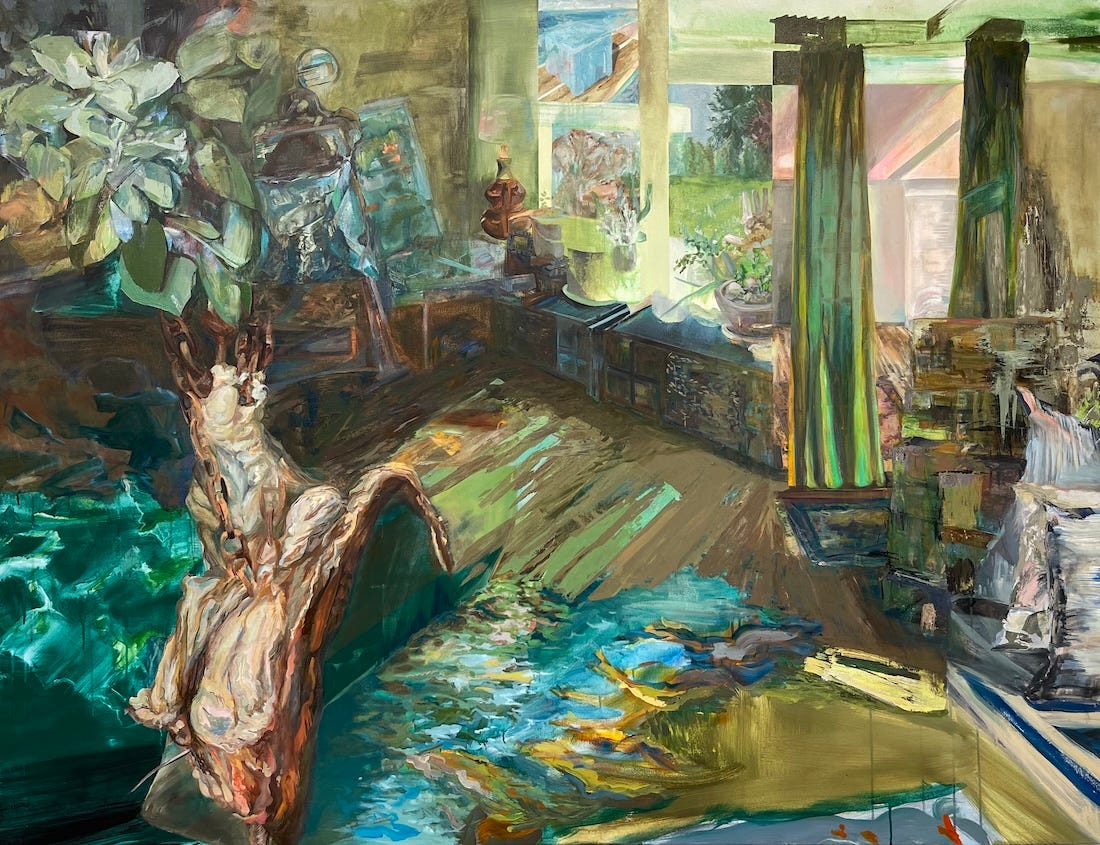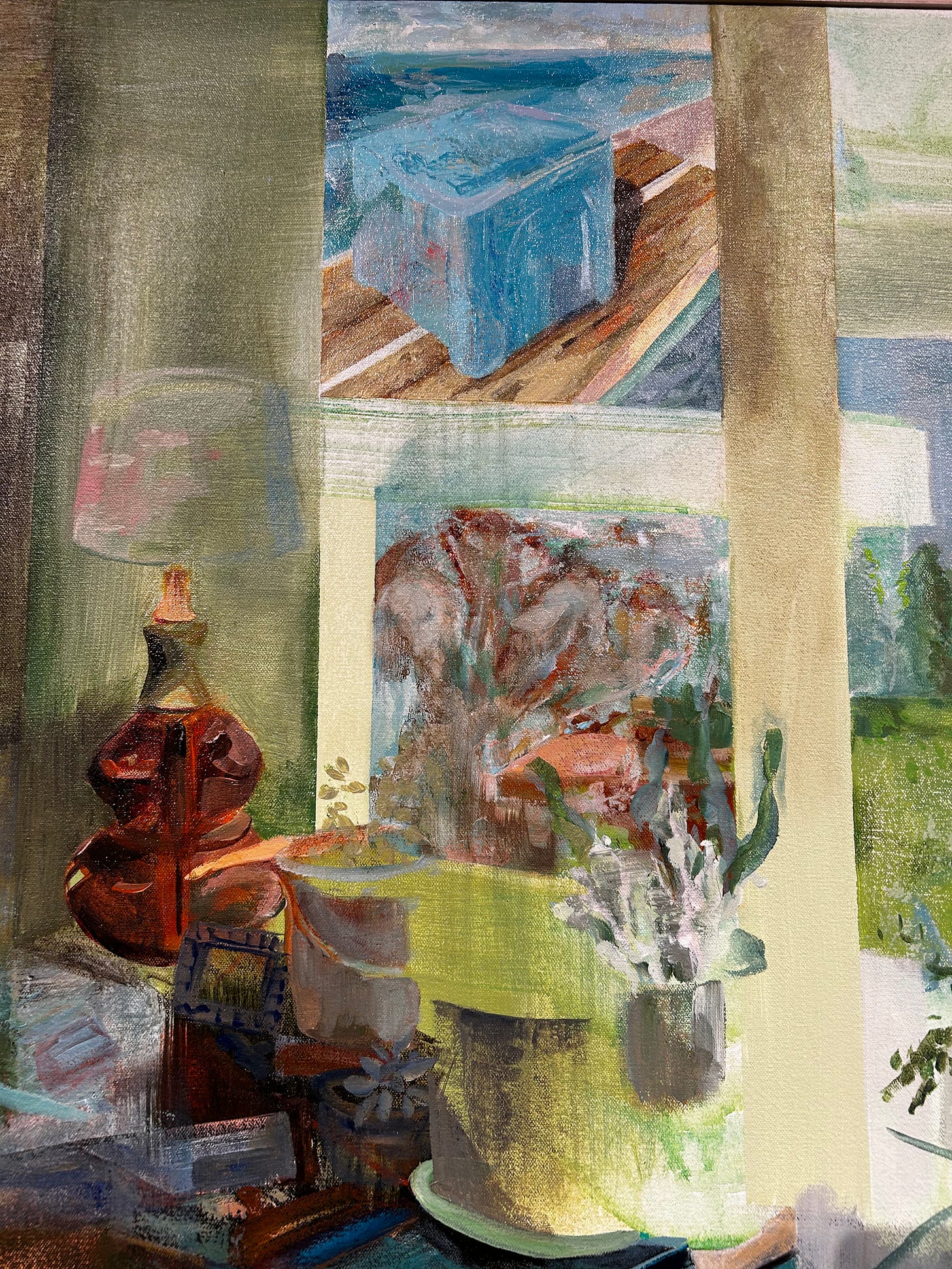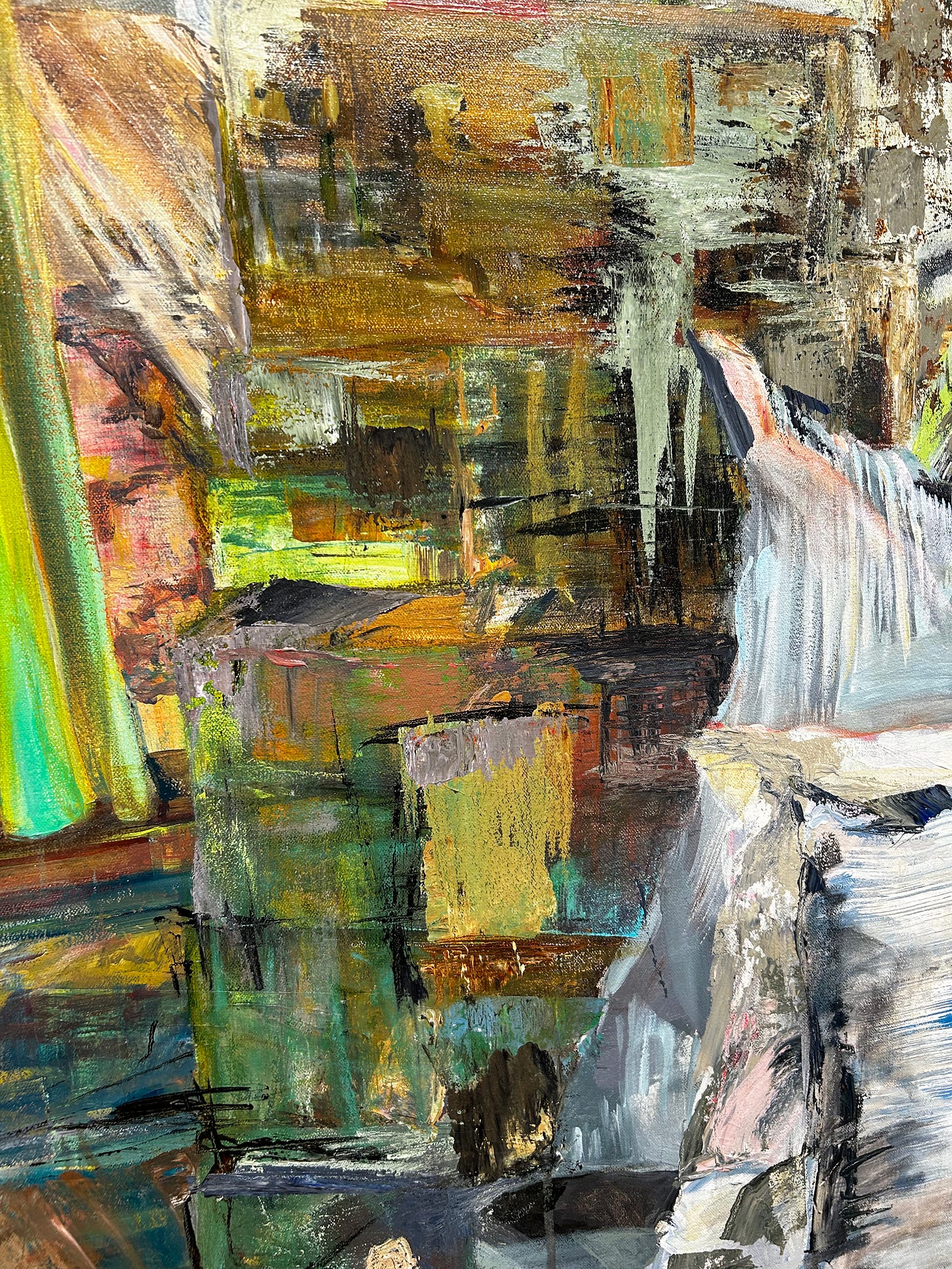Exhilarating, every time
Twice each week, when I swim in the saltwater of Puget Sound, I deliver a Creature Report to the members of my household. Today’s report was this: multiple crabs, angrily red-purple; one starfish, dull gray, showing evidence of limb loss; and one possible young flounder, so identified because it resembled an adult flounder but was petite, un-flat, and had eyes on both sides of its head, and I have learned that when flounder mature, their eyes migrate so both eyes are on one side of their heads. I have also learned that flounder, like squid and octopi, have chromatophores, cells in their skin that allow them to change color in order to blend in with the rocks and sand where they hang out. Swimming along in the shallows as I do, very often a piece of the seafloor mosaic rises up and darts off. A flounder! My heart pounds against my wetsuit as if it will leap out and follow the fish. It is exhilarating, every time, and inevitably I find myself smiling down into the water, giddy at feeling involuntarily bonded to this alien world.
After swimming today, I went shopping near Greg Kucera Gallery and stopped in to see what was on. What I discovered was a hall of fantastic, fantastical paintings by Drie Chapek gathered under the title Inside the Outside. These large canvases are shifting mirages made of acrylic and oil, Bits of recognizable imagery pop out from swirling, abstract fields of brush strokes, like camouflaged creatures lying in wait. The titles of the paintings commingle times of day and states of being (Midnight Bliss, Sunbreak Shifting, Midday Living), and the ones I love the best depict wild landscapes and human architectures infiltrating one another, borderless, communing.

A roughly hewn waterfall spills along a living-room wall, vaguely tropical waters pooling on the living-room floor, mixing with the sunlight pouring in from the windows. Color and light suffuse objects so that what is solid — a chair, a lamp — may appear to be transparent, as if things were full of their environments rather than the other way around. There is a profound sense of interconnectedness. The visual reversals are dizzying. They are also somehow calming. The imagery, continually unfurling, is happening inside me; we have become joined.
There is something about the way these visions shift and slide that feels familiar to me from my years of swimming. Riding the bus on my way home and looking up the artist, I discovered that Chapek lives locally and swims the same Sound as me nearly every day, and that, also like me, she grew up in the 1980s between households, building her own interior landscape of connections. She traveled “through the air and across land to several homes” where she “experienced different caretakers, environments, and cultures,” she writes. “I searched for solid ground in that motion.” Starting early, like her, I have found truth, love, and belonging in motion, too, and in ruins, mess, trauma. I detect broken illusion in her work. Fracture makes the ongoing fluidity of collage possible. This is something like what Chapek has achieved spatially in her paintings. Swimming is not the subject of the paintings in Inside the Outside, but to me, it feels like swimming is how the paintings work.
Inside the outside is how I feel when I swim. I am free here to move in any direction. The water is its own free and greater thing; it may veto any plans I have. I keep my head down except to breathe, and what I can see is sometimes clear and other times ambiguous, distance and perspective failing to compute as they do on land, to my relief and release. As space morphs underwater, time twists, too. The prehistoric floats and lurks in the present. The views forever fluctuate. A flounder, its ancient stripes suddenly made clear from nowhere, disappears into the cloudy mist of deeper water that always awaits in the immediate distance. Harbor seals appear and disappear this same way, a distant, peripheral flicker that in an instant transforms into a warm-blooded co-swimmer, and just as quickly metamorphoses into a receding ghost. I am inside the outside when I swim, disappearing into the collapsing boundaries between interiority and exteriority, home and away. The relentless flux of the water reconnects me to the sanity-saving truth that everything is always changing anyway. I practice loosening my grip.




Thanks for this lovely escape. Saw the ML Schumacher doc at the WI Film Fest this past weekend. Learned about you and the others featured in that film. We need you! Keep writing. ♥️
ooh these are cool and this writing is the coolest